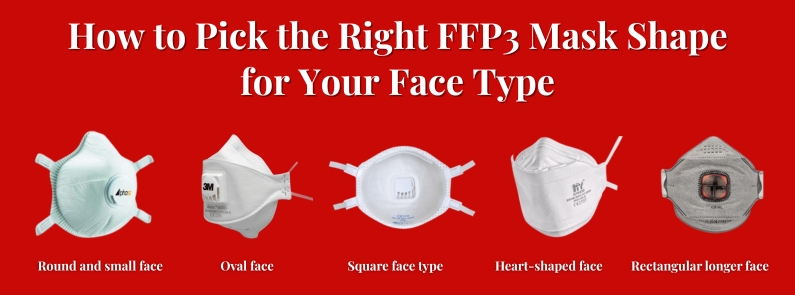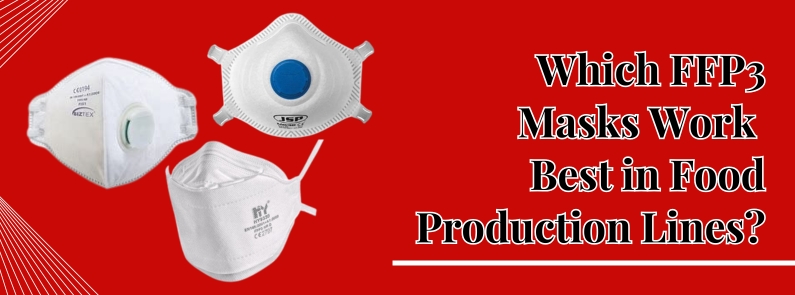
If your work requires you to work in close spaces with inadequate ventilation, then respiratory protection is just for you. Respiratory ventilation becomes necessary as Aerosols along with fine particles represent two of the most dangerous health hazards, that workers come across every day.
Contact over decades may result in the development of grave health conditions. In some cases, employees are greeted with unpleasant odors. So, how do you avoid these nasty irritants, while still enjoying your work?
Respiratory Protective Equipment (RPE), such as an FFP3 face mask, migh have the answer. These masks are intended to protect your airways from harmful substances that may enter during particular tasks or in hazardous settings. The risk is greatly reduced by adhering to Standard EN 149 and ensuring that employees wear RPE justified by the guidelines of each FFP face mask standard.
FFP Meaning
The precise meaning of FFP is "Filtering Facepiece". It is the official word for masks that have been evaluated and found to be effective in protecting against fine particle-contaminated air. These particles have the potential to create health problems if inhaled. Particle-filtering half masks, also called fine particle masks, are another name for this type of facepiece. They fall into three protection classes: FFP1, FFP2, and FFP3 masks.
Each FFP mask has been tested and assigned a level of protection, which is represented by the number complying with "FFP"; so, when you see a mask labeled FFP2 or FFP3 face mask, you will be able to determine the amount of protection provided by that mask.
How do Particle-filtering Face Masks Work?
Particle-filtering face masks provide efficient protection against dust, mist, and fumes. The filter cloth is densely woven and electrostatically charged, preventing dangerous chemicals from passing through and being inhaled.
A respirator mask protects the mouth and nose and is made up of several filter materials including the mask itself. Their use is required in working conditions that exceed the occupational exposure limit value (OEL). This is the highest amount of dust, smoke, and possibly aerosols in the breathing air that won't trigger health problems. In the event of a transgression, respiratory masks must be used.
Respirators are awarded an 'assigned protection factor' (APF) classification to assist the wearer in selecting the appropriate amount of protection. The APF is a measure of how much protection a respirator offers.
When properly installed and worn, FFP1 masks should limit exposure to airborne particulates by a factor of four, an FFP2 by ten, and an FFP3 by twenty.
Filtering FacePiece (FFP) Protection Classes
Respirator masks comprising FFP1 to FFP3 dust masks provide breathing protection for different levels of pollution, based on total leakage and particle size filtering up to 0.6 μm. Because of unique filter technology, breathing resistance is kept to a minimum, and breathing is not exacerbated by captured particulates in the filter after repeated use.
FFP1
FFP1 masks are designed for working conditions that do not include toxic or fibrogenic dust or aerosols. They filter at least 80% of particles up to 0.6 μm. FFP1 respirator masks are commonly used in the construction and food industries.
This FFP1 mask protects against the following:
- Protection against harmful and non-fibrogenic dust.
- Inhalation can lead to the development of health problems, irritate the respiratory system, and produce unpleasant odors.
- Total leakage may be up to 25%.
- This type of mask can be used with a maximum of four OEL transgressions.
FFP2
FFP2 masks are designed for use in areas where harmful and mutagenic particulates can be detected in the breathing air. Respirator masks in this class must capture at least 94% of particles ranging up to 0.6 μm. FFP2 respirator masks are commonly used in the metal as well as mining industries.
The FFP2 mask protects against the following:
- Protection against firm and fluid harmful dust, smoke, including aerosols.
- Particles may be fibrogenic, meaning they disturb the respiratory system in a short period but can reduce the flexibility of pulmonary tissue over time.
- Total leakage could be as high as 11%.
- OEL reaches a tenfold value.
FFP3
FFP3 face masks provide the best protection from air pollution. Maximum leakage is 5%, and particles up to 0.6 μm must be filtered at 99% efficiency. This type of mask also filters out toxic, carcinogenic, and radioactive particles. They are widely utilized in the chemical industry.
The FFP3 dust mask protects against the following:
- Protection against hazardous dust, smoke, along aerosols.
- This protective type of respirator mask filters out oncogenic and radioactive compounds, as well as pathogens like viruses, bacteria, and fungal spores.
- Total leakage may be up to 5%.
- OEL reaches the thirtyfold value.
Embrace the Future of Protection with FFP
Understanding the meaning and varieties of FFP masks allows you to make better choices about how to protect yourself from airborne risks. Remember that FFP masks provide higher protection but require a tight fit and careful use. To provide goods that exceed the essential requirements for protecting workers from hazards, Protective Masks Direct goes far beyond.
We stock a variety of protective masks with varying levels of protection, including convenience dust masks, the entire Disposable Dust Masks line, which includes FFP1, FFP2, FFP3, and 3M masks that protect against fine dust, and a variety of masks that protect against viruses. Are you searching to purchase a filtering facepiece? Go ahead and browse our extensive selection.





